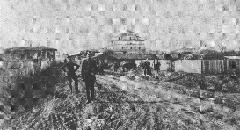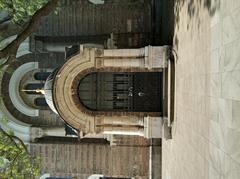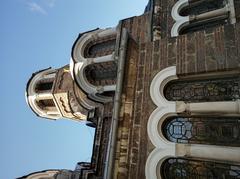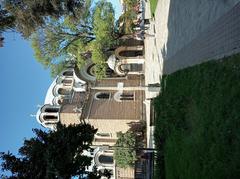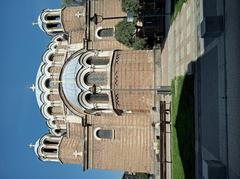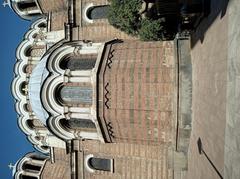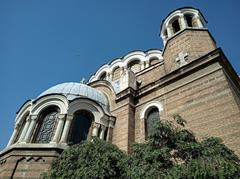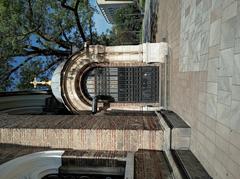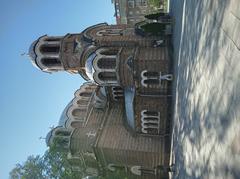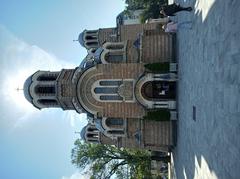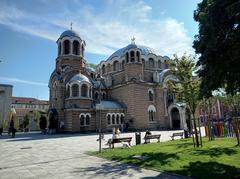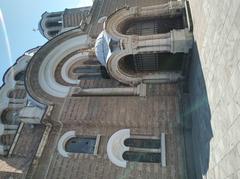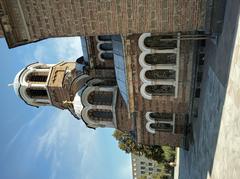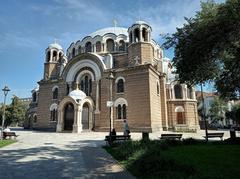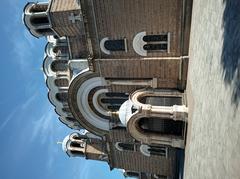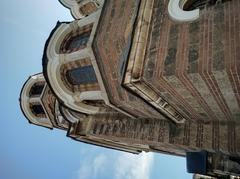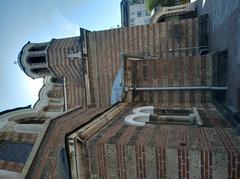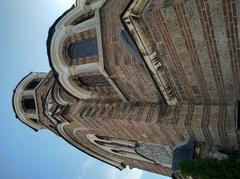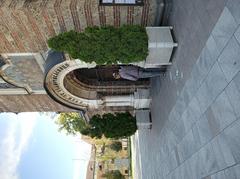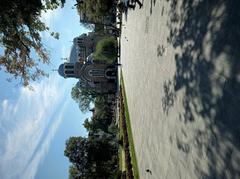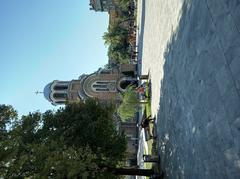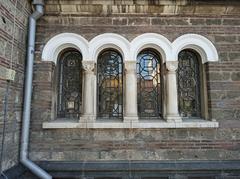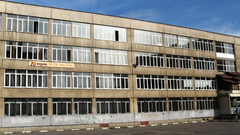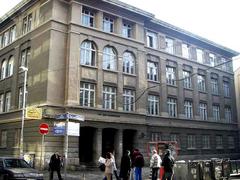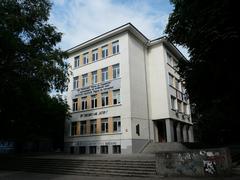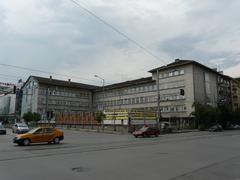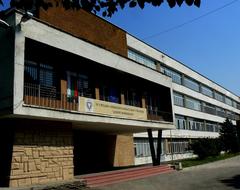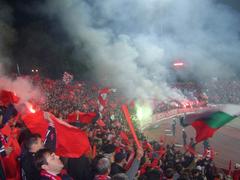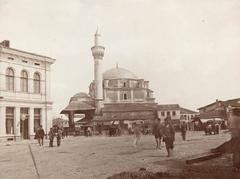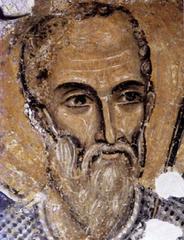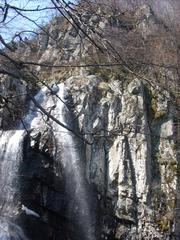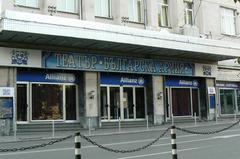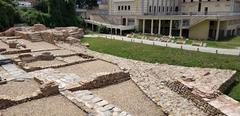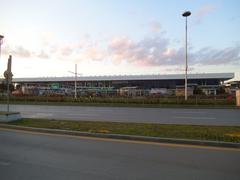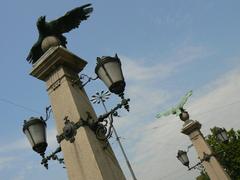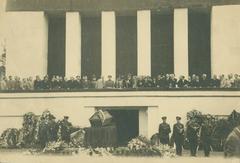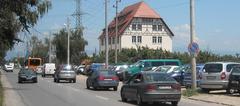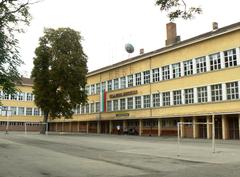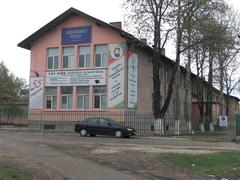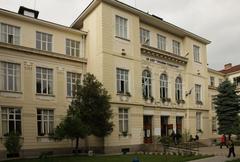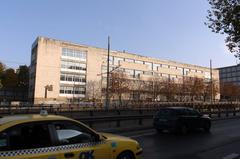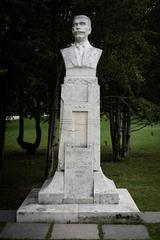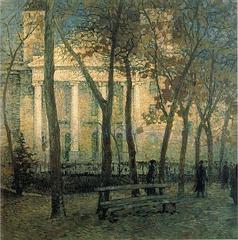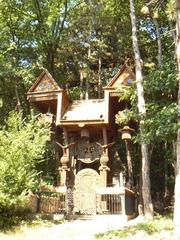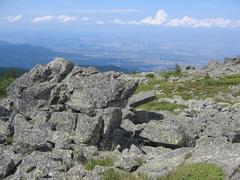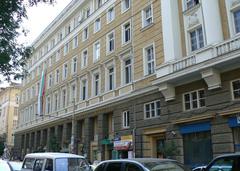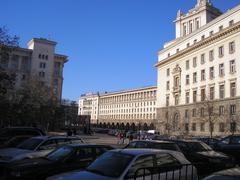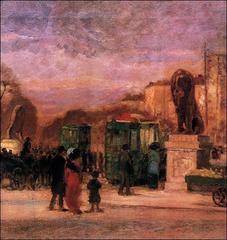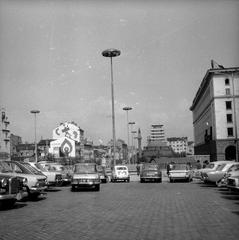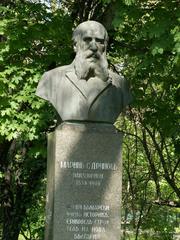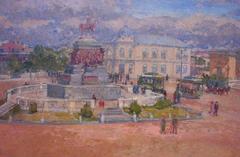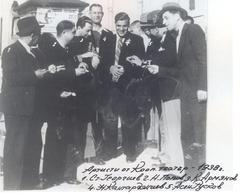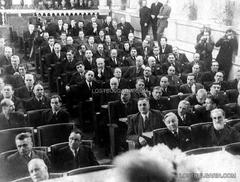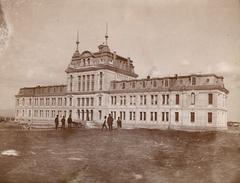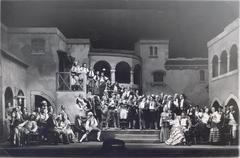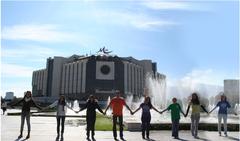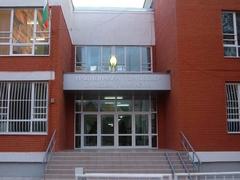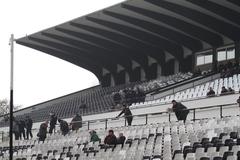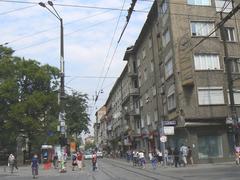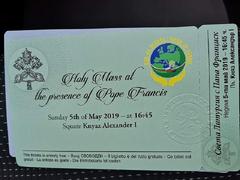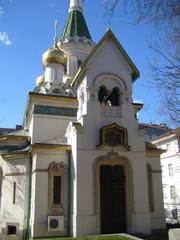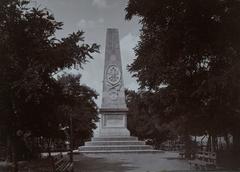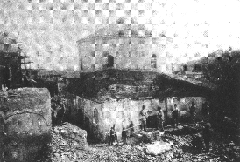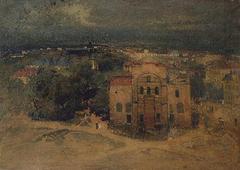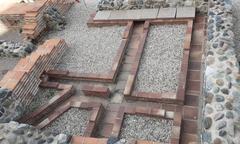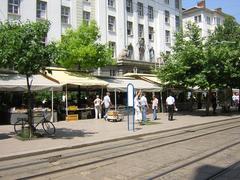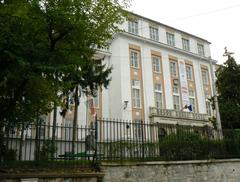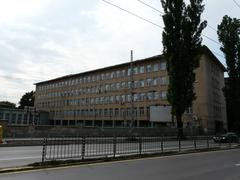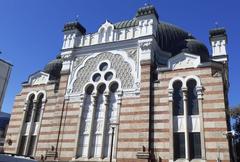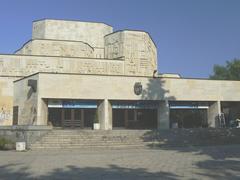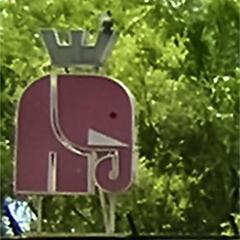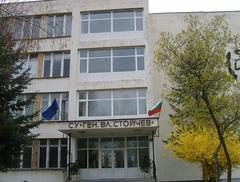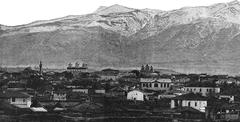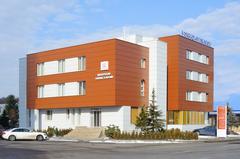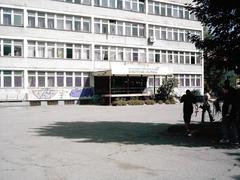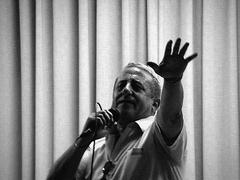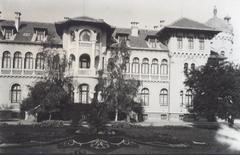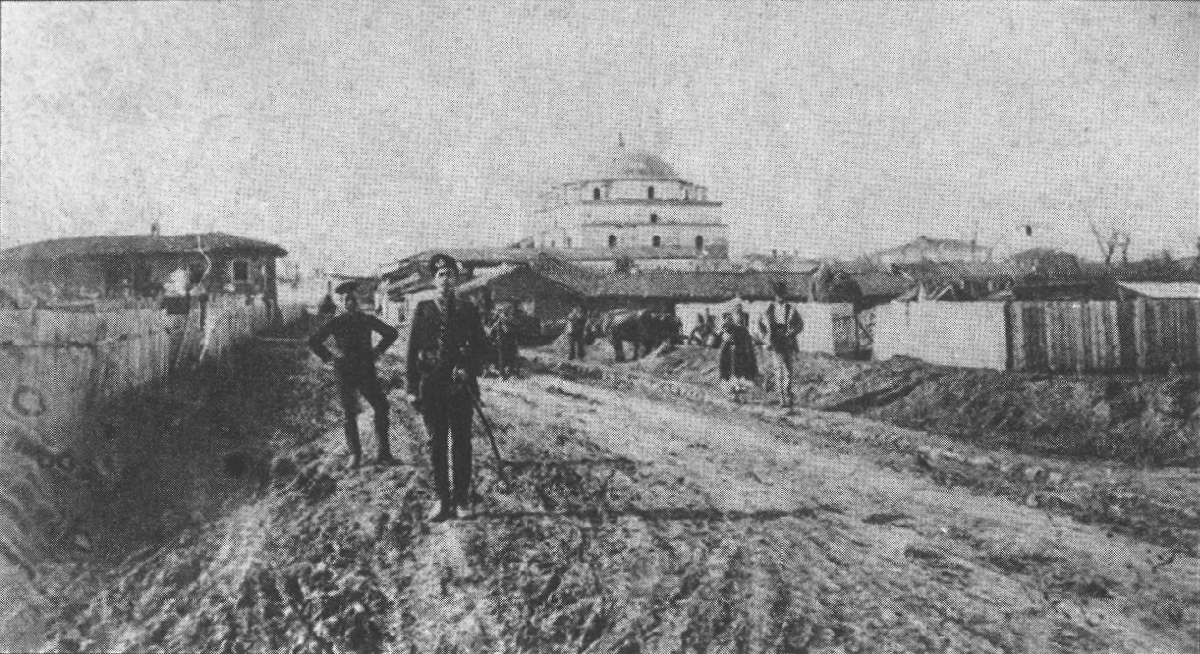
Seven Saints Church Sofia: Visiting Hours, Tickets, and Historical Sites Guide
Date: 14/06/2025
Introduction
Located in the heart of Sofia, Bulgaria, the Seven Saints Church (Sveti Sedmochislenitsi) is a striking testament to the city’s rich historical tapestry. From its ancient foundation as a pagan temple to its transformation into an Ottoman mosque and, ultimately, an Orthodox church, the site embodies centuries of religious and cultural evolution. Today, it is a vibrant centerpiece of Sofia’s spiritual life and a must-visit destination for anyone interested in Bulgarian history, architecture, and culture (The Dana Edition, OrangeSmile, Sofia Tourism).
Table of Contents
- Introduction
- Historical Overview
- Architecture and Artistic Highlights
- Visitor Information
- Getting There
- FAQs
- Visitor Etiquette and Tips
- Conclusion
- References
Historical Overview
Early Foundations and Roman Roots
The site of Seven Saints Church has served as a sacred ground for nearly two millennia. Archaeological research indicates its earliest incarnation was a Roman pagan temple dedicated to Asclepius, the god of medicine, during the days of ancient Serdica (4th–5th centuries). With the advent of Christianity, the temple was replaced by an Early Christian basilica and a nunnery, which were closely linked to the influential Rila Monastery.
Ottoman Era: Black Mosque
In 1547, during Ottoman rule, the site was transformed into the Black Mosque (Kara Camii), designed by the famed architect Mimar Sinan. The mosque featured a prominent lead-covered dome and a dark granite minaret, serving not only as a place of worship but also as a center for social services, including a public kitchen and Islamic school.
Bulgarian Revival and Church Transformation
Following Bulgaria’s liberation in 1878, the mosque was initially abandoned and repurposed as a military warehouse and later as a prison. At the beginning of the 20th century, in a powerful act of national revival, the building was converted into an Orthodox church. Bulgarian architects Yordan Milanov and Petko Momchilov oversaw the transformation, preserving the grand dome while adding traditional Orthodox elements. Construction concluded in 1902, with the interior decoration completed by 1996.
Dedication to the Seven Saints
The church is named for Saints Cyril and Methodius and their five disciples—Clement of Ohrid, Naum, Gorazd, Angelarius, and Sava—who were instrumental in creating the Glagolitic script and spreading Slavic literacy. Their legacy is celebrated annually on July 27th, and the church stands as a living tribute to their impact on Bulgarian identity and culture (The Dana Edition).
Architecture and Artistic Highlights
The Seven Saints Church is renowned for its seamless fusion of Ottoman and Bulgarian Revival styles. Its central dome—a legacy of the mosque—dominates the skyline, while the interior is adorned with vibrant frescoes and icons crafted by prominent Bulgarian artists. The iconostasis and altar are intricately carved and gilded, and the church’s symbolic candlesticks, fashioned from old police badges, commemorate Bulgaria’s unification in 1885.
The church’s garden offers a serene oasis, and the western façade features an operational electric clock from the 1930s. Visitors can admire the unique blend of architectural motifs, from Byzantine arches and decorative brickwork to Orthodox religious symbolism (OrangeSmile).
Visitor Information
Visiting Hours
- Daily: 8:00 AM – 6:00 PM
- Note: Hours may vary on religious holidays or during special events.
Tickets and Admission
- Entry: Free for all visitors.
- Donations: Welcome and help support preservation efforts.
Accessibility
- Wheelchair Access: The main entrance and garden are accessible. Ramps are available.
- Assistance: Staff is available to help visitors with special needs.
Guided Tours and Events
- Guided Tours: English-language tours can be arranged in advance; daily group tours may be available at 11:00 AM and 3:00 PM.
- Events: On July 27th, special liturgical services and cultural programs celebrate the Seven Saints.
Photography Tips
- Photography is allowed, but please be discreet—no flash or tripods during services.
- The dome, iconostasis, and garden provide excellent photo opportunities.
Nearby Attractions
- Alexander Nevsky Cathedral (5-minute walk)
- Saint Sofia Church
- National Archaeological Museum
- Vitosha Boulevard (shopping and dining district)
- Sofia History Museum
Getting There
- Address: 1A, 6 September St, Sofia, Bulgaria
- Metro: Serdika Station (Lines M1 and M2)
- Bus: Lines 9, 72, 213
- Tram: Lines 4, 12, 18
- Parking: Limited street parking; several paid lots nearby
- Luggage Storage: Public Locker Sofia near Serdika station
Frequently Asked Questions (FAQs)
Q: What are the opening hours?
A: Daily, 8:00 AM – 6:00 PM.
Q: Is there an entrance fee?
A: No, admission is free.
Q: Are guided tours available?
A: Yes, book in advance for English-language tours or join scheduled daily tours.
Q: Is the church accessible for wheelchairs?
A: Yes, with ramps and wide doorways.
Q: Can I take photographs inside?
A: Yes, but avoid flash and respect worshippers’ privacy.
Q: Is there parking nearby?
A: Limited street parking is available; public transport is recommended.
Q: Are services held regularly?
A: Yes, regular Orthodox liturgies and special services on feast days.
Visitor Etiquette and Tips
- Dress Code: Modest attire required; cover shoulders and knees. Scarves are available at the entrance.
- Behavior: Maintain silence, especially during services. Lighting candles is customary.
- Photography: Discreet, no flash; ask before photographing clergy or worshippers.
- Best Times to Visit: Early mornings or late afternoons for a peaceful experience.
- Events: Attend on July 27th for the feast of the Seven Saints or May 24th for the Day of Bulgarian Education and Culture.
Conclusion
Seven Saints Church stands as a living monument to Bulgaria’s multifaceted spiritual and cultural identity. Its transformation from a Roman temple to an Ottoman mosque, and finally to an Orthodox church, mirrors the historical shifts that have shaped Sofia. Free admission, central location, and accessible facilities make it an inviting destination for all. Whether exploring its rich interiors, attending a service, or discovering nearby landmarks, a visit to Seven Saints Church offers a meaningful journey through Bulgaria’s past and present.
References
- This guide incorporates information from trusted sources, including official tourism and church websites, as well as leading cultural travel resources:
For the latest updates, detailed maps, or virtual tours, visit the official tourism pages or download the Audiala app for self-guided experiences and local insights.
